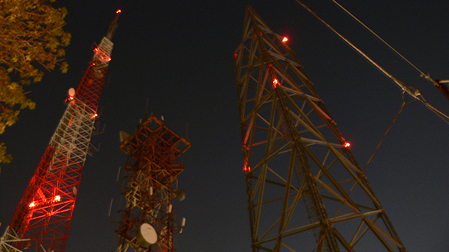White Space Changes Proposed by FCC
Would allow for more robust service in attempts to close digital divide

WASHINGTON—The FCC could be opening up TV white spaces to a wider range of devices if proposed changes go through.
In response to a petition field by Microsoft, the FCC has issued a Notice of Proposed Rulemaking (passed unanimously among Chairman Ajit Pai and the commissioners) that would update the FCC’s rules to allow “for more robust service and efficient use of white space devices particularly in rural areas, without increasing the risk of harmful interference to protected services in the TV bands.”
White space refers to the portions of the broadcast television bands that are not used by TV stations, which proponents for these rules believe can be used to provide improved broadband coverage for rural Americans.
The specifics of the NPRM includes allowing higher transmit power and antenna height above average terrain for fixed white space devices in less congested geographic areas to create greater reach by white space devices. It would also permit higher power mobile operation within defined geographical areas and revise the rules to provide flexibility for these devices to participate in the Internet of Things.
The FCC is now seeking comment on methods that could be used to allow higher power operation by white space devices when adjacent TV channels are occupied.
The debate over white space has been developing for several months, with broadcasters open to collaboration, but clear that their services should not be interfered with.
Dennis Wharton, NAB executive vice president of communications, issued the following statement on the FCC’s NPRM:
Get the TV Tech Newsletter
The professional video industry's #1 source for news, trends and product and tech information. Sign up below.
“The NPRM the FCC has adopted reflects significant discussion and compromise. We hope the commission will continue to pursue a consensus-based approach in this proceeding, and we hope the commission will move swiftly.”
Connect Americans Now Executive Director Richard T. Cullen had his own statement praising the FCC for this action.
“By supporting innovative solutions, like TV white space, as part of a mixed-technology approach, more of America’s farmers and ranchers will be able to capitalize on advancements in precision agriculture that can increase yields and conserve resources; more seniors and veterans will have access to telehealth solutions that can reduce costs and enhance quality of life; more students will be empowered to reach their full potential out from behind the homework gap; and economic opportunity can be increased in thousands of rural communities. With so much at stake, we encourage the commission to move swiftly to finalize and implement rules in 2020 that support greater utilization of TV white space to enhance the pace, scale and cost-effectiveness of rural broadband deployments.”
